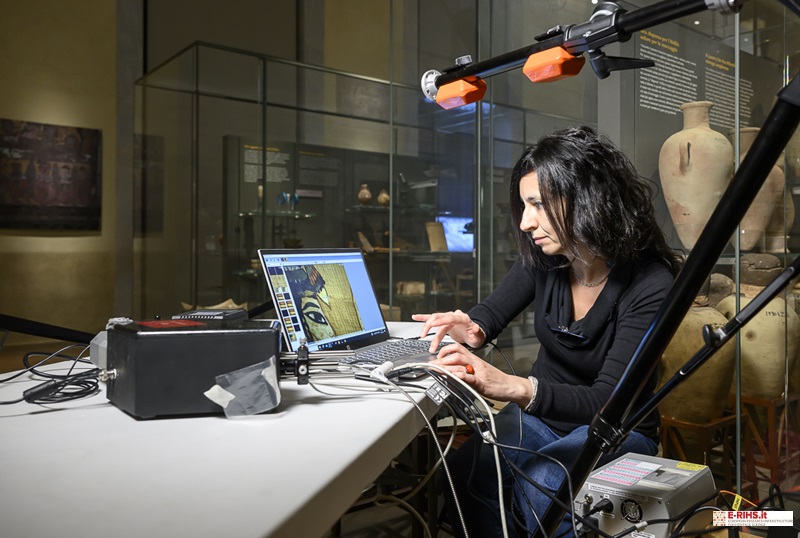
LABORATORY: CNR-ISPC
NAME OF THE INSTRUMENT
Portable micro-SORS prototype
GENERAL DESCRIPTION
In Cultural Heritage field, Raman spectroscopy is one of techniques of choice for the identification of pigments (both inorganic and organic) used in paintings, frescos, and decorated objects. The advantage of this technique is its high chemical selectivity which leads to the ability to unequivocally identify the type of molecules, and consequently, the type of pigments. Raman data allows reconstructing the artist’s technique, as well as the artwork state of conservation. In fact, in addition to the palette, information about the presence of degradation products or substances used for conservation purposes can be achieved.
The instrument is a micro-Raman system, which is a Raman spectrometer coupled with an optical microscope. This setup enables high lateral resolution analyses (less than 1 µm), ideal for characterizing heterogeneous materials at the micrometric scale like those encountered in Cultural Heritage field. Both point measurements and two-dimensional mapping can be performed, providing information about the distribution of different compounds on the surface of the objects.
The Raman spectrometer available at MOLAB is a portable micro-SORS prototype, which allows the simultaneous acquisition of i) conventional Raman spectra, providing compositional information of the object surface, and ii) micro-SORS spectra, acquired at micrometric distances (offsets) from the laser incidence point, for the detection of Raman photons generated deeper within the objects and emerging laterally on the surface
Micro-SORS technique impact in the field of Cultural Heritage reliesIn this way, the detection of Raman photons generated deeper within the sample and emerging laterally at the surface is achieved.the ability to partially reconstruct the painted layer sequence and identify degradation products hidden underneath the surface.
TECHNICAL DESCRIPTION
Lo strumento è composto da uno spettrometro WP785 (Wasatch Photonics), accoppiato con una CCD iDus DU4011A-BR-DD (Andor), laser a diodo con lunghezza d’onda 785 nm (Innovative Photonic Solutions -IPS) e potenza che va da un minimo di 0.76 µW ad un massimo di 30 mW. La risoluzione spettrale dello spettrometro è di 8 cm-1, e il range spettrale va da 100 a 3050 cm-1. Come ottica di eccitazione e raccolta vengono utilizzati due obiettivi 10x a lunga distanza focale (Mitutoyo; NA 0.26 – WD 30.5 mm). L’obiettivo attraverso il quale viene focalizzato il laser è posizionato ad un angolo di circa 45° rispetto al piano del campione. Il diametro calcolato dello spot del laser è di circa 20 μm. Una telecamera (DinoLite) viene utilizzata per osservare e selezionare la porzione del campione da misurare; il sistema ottico è posizionato su un micro-stage (Thorlabs M30XY) che permette operazioni di allineamento e messa a fuoco del campione con elevata accuratezza. L’intero sistema, infine, è montato su un treppiede. Le distanze di offset sono ottenute attraverso l’utilizzo di un fascio di fibre ottiche di dimensioni micrometriche (fibre bundle Armadillo SIA – LV) che consente l’acquisizione simultanea dello spettro Raman convenzionale e degli spettri micro-SORS (fino a 15 spettri, con offset dai 37 µm ai 525 µm). Questa caratteristica è particolarmente vantaggiosa per le analisi in situ in quanto consente di rendere il sistema estremamente stabile e di garantire rapidi tempi di misura (sequenze micro-SORS acquisite in pochi secondi o pochi minuti). L’acquisizione degli spettri è comandata dal software LabVIEW.
Referent:
Claudia Conti claudia.conti@cnr.it
